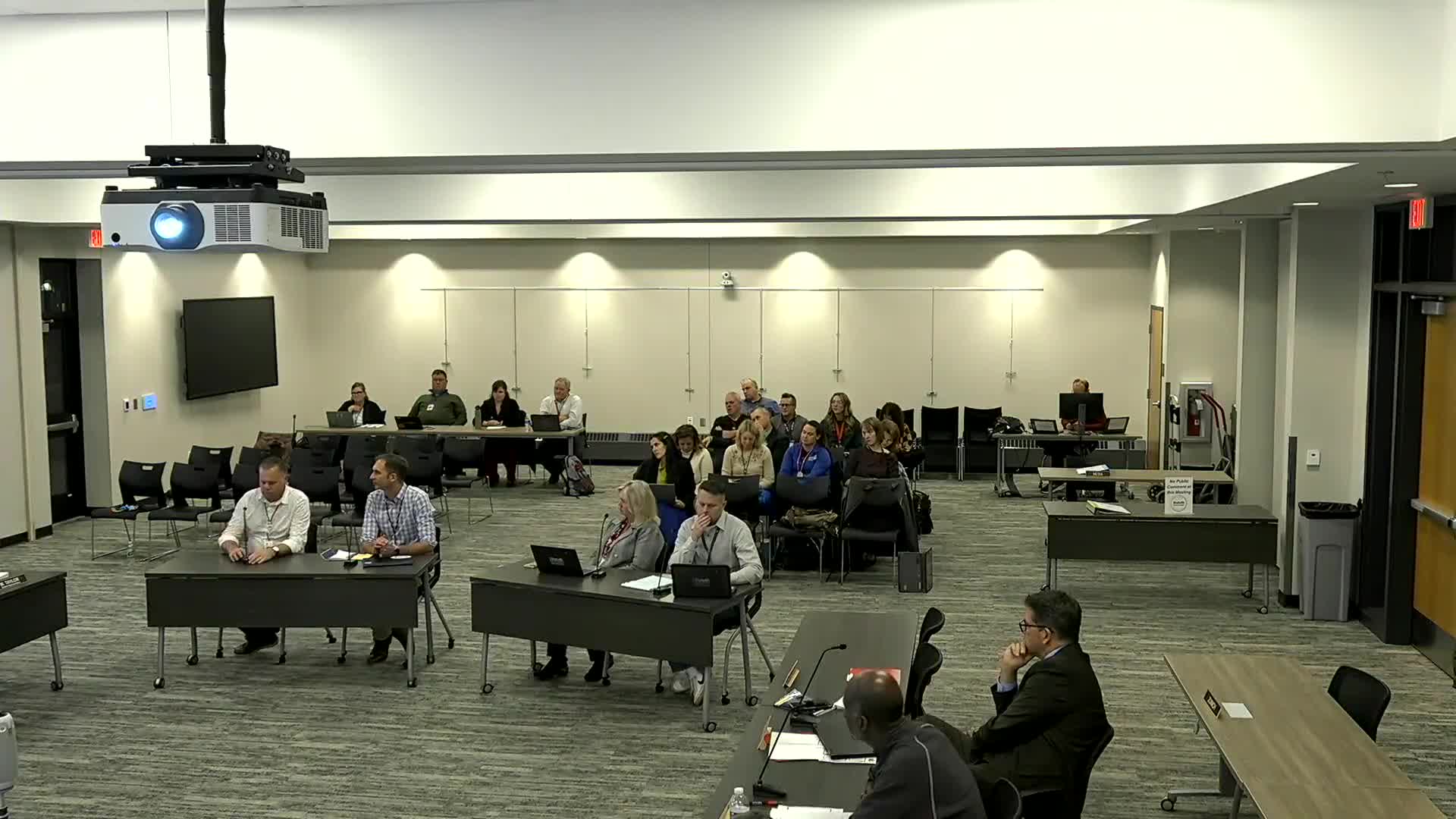Principals describe 'win time' interventions and push‑in supports that raised reading growth at some sites
November 08, 2025 | DULUTH PUBLIC SCHOOL DISTRICT, School Boards, Minnesota
This article was created by AI summarizing key points discussed. AI makes mistakes, so for full details and context, please refer to the video of the full meeting. Please report any errors so we can fix them. Report an error »

Principals from Duluth Public School District described site examples the board could visit to see Minnesota MTSS practices in action.
At Estill Elementary, Principal Nathan Anderson said the school moved from program‑based pull‑outs to a grade‑level, all‑hands approach during daily intervention time ("win time"). Anderson described assessing an entire grade, regrouping students by instructional need regardless of program label (special education, Title, general education), and deploying six to seven adults into those grade‑level blocks. "We have 6 to 7 adults going into our grade level and we're really getting some nice small groups and we're seeing some real positive gains with that," Anderson told the board. He said a fifth‑grade pilot cohort posted a 16 percentage‑point increase in students meeting MCA proficiency when the approach was used with that cohort.
High school staff and the alternative learning centers are piloting earlier interventions for students at risk of failing first‑quarter classes, district staff said. Rather than waiting for summer credit recovery, the district is providing content and curriculum so failing students can make up missing work in early quarters and remain on track, a district presenter said.
Lowell Elementary Principal Eve Hesser described a "day in the life" exercise the school used last spring to follow several special education students and chart their access to grade‑level instruction. Hesser said the team discovered some students attended class but could not access grade‑level instruction; the school shortened win time to 30 minutes and increased frequent push‑in support in classrooms. Hesser recounted an interventionist reporting that a student who worked with the interventionist during daily writing time produced a full page of writing and later proudly showed it to staff: "When she told me that, I just got goosebumps," Hesser said. She also noted language and scheduling challenges at Lowell (three languages in some classrooms and split classes) that complicate delivery of phonemic‑awareness instruction; the school coordinates short phonemic awareness blocks in English and Ojibwe so students can make connections across languages.
What this means for other sites: principals and district leaders encouraged board members to visit schools; several board members said they will schedule intentional site visits to see the practices in classrooms. District leaders framed these examples as part of the district's shift to monitoring adult instructional practices and ensuring interventions are offered earlier and more equitably across students.
Provenance:
This article is based on principal remarks and site examples beginning with Nathan Anderson's presentation of the grade‑level intervention model and continuing through Lowell's "day in the life" special education example.
At Estill Elementary, Principal Nathan Anderson said the school moved from program‑based pull‑outs to a grade‑level, all‑hands approach during daily intervention time ("win time"). Anderson described assessing an entire grade, regrouping students by instructional need regardless of program label (special education, Title, general education), and deploying six to seven adults into those grade‑level blocks. "We have 6 to 7 adults going into our grade level and we're really getting some nice small groups and we're seeing some real positive gains with that," Anderson told the board. He said a fifth‑grade pilot cohort posted a 16 percentage‑point increase in students meeting MCA proficiency when the approach was used with that cohort.
High school staff and the alternative learning centers are piloting earlier interventions for students at risk of failing first‑quarter classes, district staff said. Rather than waiting for summer credit recovery, the district is providing content and curriculum so failing students can make up missing work in early quarters and remain on track, a district presenter said.
Lowell Elementary Principal Eve Hesser described a "day in the life" exercise the school used last spring to follow several special education students and chart their access to grade‑level instruction. Hesser said the team discovered some students attended class but could not access grade‑level instruction; the school shortened win time to 30 minutes and increased frequent push‑in support in classrooms. Hesser recounted an interventionist reporting that a student who worked with the interventionist during daily writing time produced a full page of writing and later proudly showed it to staff: "When she told me that, I just got goosebumps," Hesser said. She also noted language and scheduling challenges at Lowell (three languages in some classrooms and split classes) that complicate delivery of phonemic‑awareness instruction; the school coordinates short phonemic awareness blocks in English and Ojibwe so students can make connections across languages.
What this means for other sites: principals and district leaders encouraged board members to visit schools; several board members said they will schedule intentional site visits to see the practices in classrooms. District leaders framed these examples as part of the district's shift to monitoring adult instructional practices and ensuring interventions are offered earlier and more equitably across students.
Provenance:
This article is based on principal remarks and site examples beginning with Nathan Anderson's presentation of the grade‑level intervention model and continuing through Lowell's "day in the life" special education example.
Don't Miss a Word: See the Full Meeting!
Go beyond summaries. Unlock every video, transcript, and key insight with a Founder Membership.
✓
Get instant access to full meeting videos
✓
Search and clip any phrase from complete transcripts
✓
Receive AI-powered summaries & custom alerts
✓
Enjoy lifetime, unrestricted access to government data
30-day money-back guarantee

